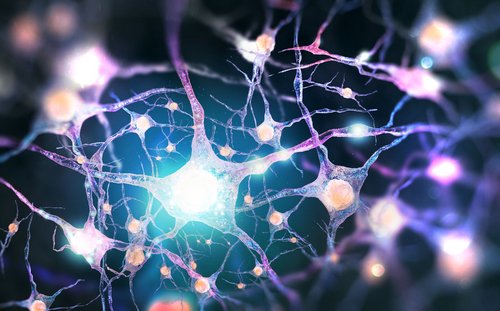Role of CLN6 in Batten Discovered, Shedding Light on Disease

The proteins CLN6 and CLN8 — which are deficient in people with two forms of Batten disease — were found to interact directly with each other, forming a functional complex in vivo, or in the body, a study discovered.
A malfunction in that CLN6-CLN8 complex, caused by a lack of CLN6, led to the delayed transport of enzymes destined for lysosomes, which are cell structures that contain digestive enzymes. Such delays are among the impairments that underlie Batten disease.
The study, “A CLN6-CLN8 complex recruits lysosomal enzymes at the ER for Golgi transfer,” was published in the Journal of Clinical Investigation.
Batten is an inherited genetic disorder that affects the function of lysosomes, which are small structures within cells that break down waste products and unused proteins into smaller components to be discarded or recycled.
Lysosomes contain more than 50 enzymes that mediate the breakdown of molecules. These enzymes are synthesized in an area of the cell known as the endoplasmic reticulum (ER), which is a network of membranes adjacent to the nucleus and a major site of protein production.
After the lysosomal enzymes are synthesized in the ER, they are then transferred by small membrane-bound vesicles (sacs) to the Golgi Body, another cell structure, where they are packaged into lysosomes.
A protein called CLN8 interacts with the newly synthesized lysosomal enzymes in the ER and participates in their transfer to the Golgi. Mutations to the CLN8 gene, which encodes the CLN8 protein, lead to decreased levels of lysosomal enzymes. This is the underlying cause of a type of late infantile Batten disease.
CLN6 is a protein that also resides in the ER. Severe mutations of the CLN6 gene cause a similar form of Batten disease in children, with comparable symptoms to CLN8-related disease. Such symptoms, which first appear between the ages of 2 and 8, include cognitive decline, seizures, vision problems, and walking difficulties.
While that is known, the “underlying defective molecular pathway linking CLN6 deficiency to lysosomal dysfunction is unclear, as the molecular function of CLN6 is yet to be characterized,” the researchers wrote.
To learn more about the function of CLN6, a team at the Baylor College of Medicine, in Houston, designed a study of the protein, and investigated whether it is related to, or dependent on, the function of CLN8.
An analysis of lysosomes isolated from the livers of mice that were deficient in the CLN6 gene found a general reduction in lysosomal enzyme levels compared with those in normal mice. However, these reductions were not caused by a lack of enzyme production from the CL6 gene. That suggested the defect in enzymatic levels occurred after the enzymes are made (post-translational).
Cell-based tests showed that the two proteins directly interacted with each other in the ER. However, unlike CLN8, which moves out of the ER with vesicles to the Golgi, CLN6 remained in the ER. Further, despite that direct interaction, the subsequent transport of CLN8-linked vesicles to the Golgi was independent of the CLN6 function.
In addition to its interaction with the CLN8 protein, the CLN6 protein was found to interact directly with lysosomal enzymes within the ER. Using modified forms of the protein — in which parts of it were deleted — the team identified a region of the CLN6 protein that is necessary to bind to lysosomal enzymes.
Next, using cells that were missing either CLN6 or CLN8 genes, the direct interaction between these two proteins was shown to be mutually required for their interaction with lysosomal enzymes. A lack of CLN6 caused a significant delay in the transport of vesicles between the ER and the Golgi.
These results confirmed that a “lack of a functional CLN6-CLN8 complex for the recruitment of lysosomal enzymes results in their inefficient exit from the ER,” the researchers wrote.
Finally, mice that were CLN6-deficient had a median survival of 450 days, whereas mice without CLN8 lived to a median of 302 days. However, mice that lacked both proteins had a median survival of 290 days, which was indistinguishable from that of CLN8-deficient mice.
Similarly, there was no worsening of visual function — a known symptom of Batten disease — in mice that lacked CLN6 and CLN8 proteins compared with those without CLN8 alone.
Because the lack of both of these proteins did not accelerate disease progression compared with CLN8 single deficiency, this suggested that “CLN6 and CLN8 work as a functional unit in vivo,” according to the researchers.
“In summary, our findings address the molecular mechanism underlying Batten disease caused by loss of functional CLN6 and identify the [CLN6-CLN8] complex as the mediator of the recruitment of lysosomal enzymes in the ER for Golgi transfer,” the researchers wrote.
“These findings uncover a previously unappreciated complexity of the early steps of lysosomal enzyme trafficking and shed light on the molecular pathogenesis of CLN6 disease, which can henceforth be interpreted as a disorder of impaired lysosomal biogenesis,” they concluded.





